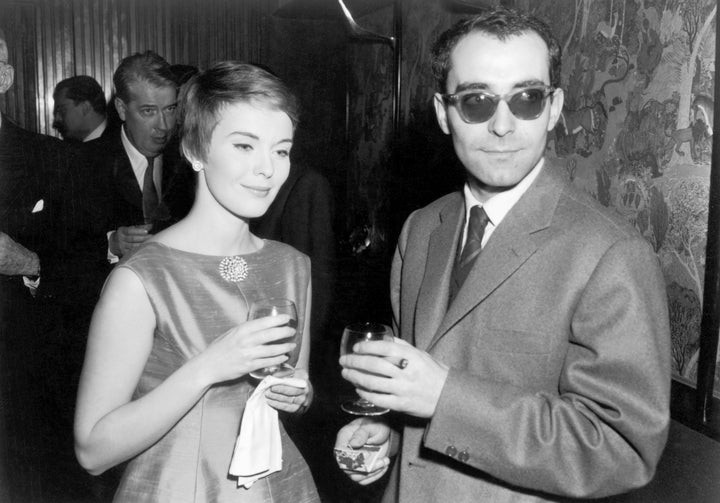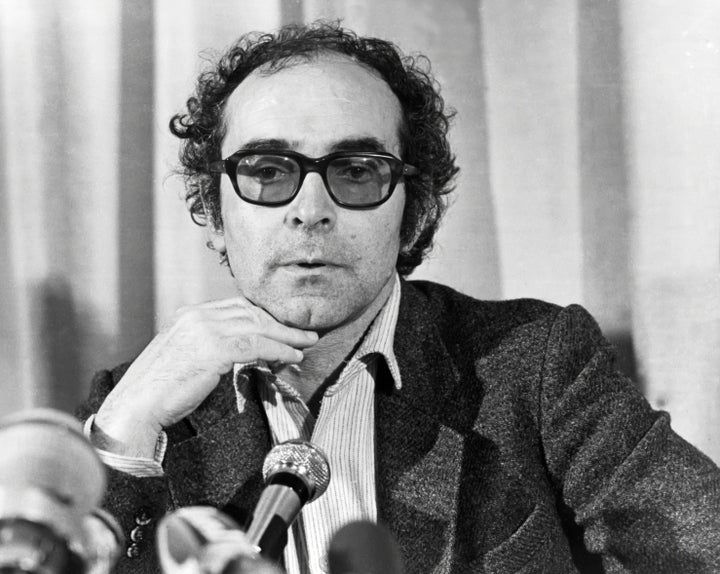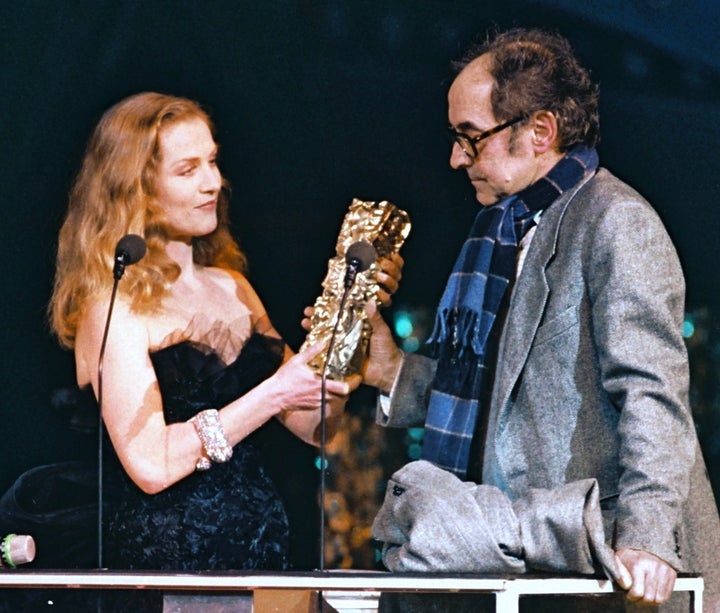
Jean-Luc Godard, one of the world’s most revered film directors, known for his radical techniques and open-ended narrative structures, has died, the French newspaper Libération and Deadline reported Tuesday. He was 91.
An elusive intellectual with a disdain for most modern American movies, Godard was a defining figure of the French New Wave, that unofficial troop of 1950s and ’60s filmmakers whose idiosyncratic work fixated on social and political unrest. Godard outlived most of his peers, including François Truffaut, Éric Rohmer, Jacques Rivette and Claude Chabrol.
Born in Paris on Dec. 3, 1930, Gordard enjoyed a life of wealth and literary scholarship. His father was a French-born physician who gained citizenship in Switzerland, where the family lived for many years. His mother was the daughter of upscale bankers. Godard discovered an affinity for movies after World War II, when he began visiting the Cinémathèque Française, which houses one of the world’s largest film archives. It was there that he met Truffaut, Rohmer, Rivette and Chabrol. These five young men became fast friends, and Godard began spending his free time engaging with cinema. He was determined to restore silent-film values to the well-established world of talkies.

Keystone-France via Getty Images
Godard’s first brush with notoriety came as a critic writing for the admired new French magazine Cahiers du Cinéma, co-founded by André Bazin, a grandfather of the auteur theory. Godard’s writing presaged the qualities we’d soon see in his own films, chiefly the notion that movies are just as powerful an art form as novels, poetry and painting.
Godard’s big-screen debut is one of the most auspicious directorial introductions in history, every bit as promising as D.W. Griffith’s “The Birth of a Nation” (minus the racism), Orson Welles’ “Citizen Kane,” Mike Nichols’ “Who’s Afraid of Virginia Woolf?” and Quentin Tarantino’s “Reservoir Dogs.” That movie is 1960’s “Breathless,” a freewheeling drama about a charming French hoodlum and the American exchange student he loves. Initially envisioned as a documentary, “Breathless” was shot with handheld cameras and non-artificial lighting to achieve a naturalistic feel ― novel concepts at the time. Godard was the first to use prominent jump-cuts, today considered a groundbreaking advancement in film editing.
“Breathless” was met with ravenous reviews. In 2010, New York Times critic A.O. Scott wrote, “Even now, at 50, it is still cool, still new, still — after all this time! — a bulletin from the future of movies.” A 2016 poll in the British magazine Sight & Sound named “Breathless” the 13th greatest movie of all time.

Images Press via Getty Images
Godard again found acclaim with the 1963 backstage drama “Contempt” and the 1964 crime comedy “Band of Outsiders,” which appeared on Time magazine’s list of the 100 greatest movies. His overall career grew increasingly political after “Breathless,” chronicling such topics as financial gloom (1962’s “My Life to Live”), the horrors of war (1963’s “The Carabineers”) and consumerism (1967’s “Weekend”). Godard’s staunch opposition to the Vietnam War was a trademark of 1967’s “Two or Three Things I Know About Her.” All the while, his work became less commercial and more elliptical. Many projected Marxist interpretations onto Godard’s filmography, though he said in a rare interview in 2016, that he had never read Karl Marx’s writings.
Throughout most of his post-1960s career, Godard’s movies were not widely released in America. Regardless, his stature as a legend hardly waned. He found a minor second wind with 1982’s “Passion,” a story about filmmaking that starred Isabelle Huppert, but most of his work was dense and obscure. In 1987, his “King Lear,” a postmodern abstraction that borrows elements of the Shakespeare tragedy, premiered at the Cannes Film Festival and saw a quick two-week run stateside. In 1998, Godard completed “Histoire(s) du cinéma,” a nearly four-hour, subjective rumination on film history that some consider the most important piece of his later career. The director was awarded an honorary Oscar in 2011, but he did not travel to America to accept the prize.
Despite making 18 movies between 1980 and his death, 2010’s divisive “Film Socialism” and 2014’s experimental 3D essay “Goodbye to Language” were the only projects with notable American exhibitions, as both screened at the New York Film Festival. The latter was acclaimed, with many critics calling it one of the year’s best. “Language” won a jury prize at Cannes, but a producer accepted on Godard’s behalf.
Two precepts held steady throughout these years: Godard never stopped experimenting with technology or using his platform to challenge the globe’s political strictures.

MICHEL GANGNE via Getty Images
Amid his spotty mainstream attention over the past few decades, Godard decried the so-called death of quality motion pictures. “I am not an auteur, well, not now, anyways,” he said in 2011. “We once believed we were auteurs, but we weren’t. We had no idea, really. Film is over. It’s sad nobody is really exploring it. But what to do? And anyway, with mobile phones and everything, everyone is now an auteur.”
Sometimes accused of anti-Semitism and often resistant to life as a public figure, Godard went out as a cranky talent who rose to prominence in the age of affluent cinematic misfits. In 2018, he released “Le Livre d’image,” an essay-film full of “Godard’s familiar end-of-civilization motifs,” as a Los Angeles Times critic put it, that focused on the Middle East.
As of 2016, Godard said he still “[hadn’t] started thinking about” how he’d like to be remembered.
“I don’t think I’ve succeeded in making any really good films,” he said. “There are moments, scenes, whole movements that sing. It has all added up to a cinema of sorts, even though I’m still learning my art.”

